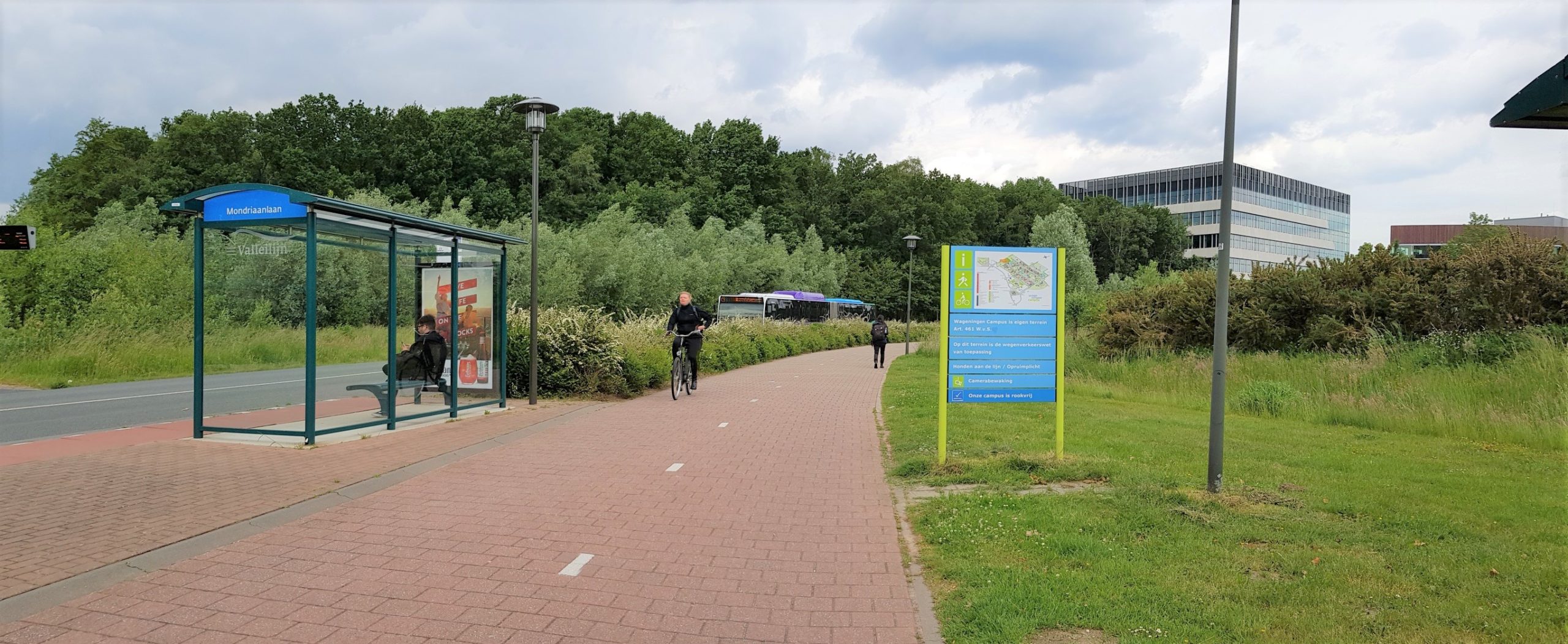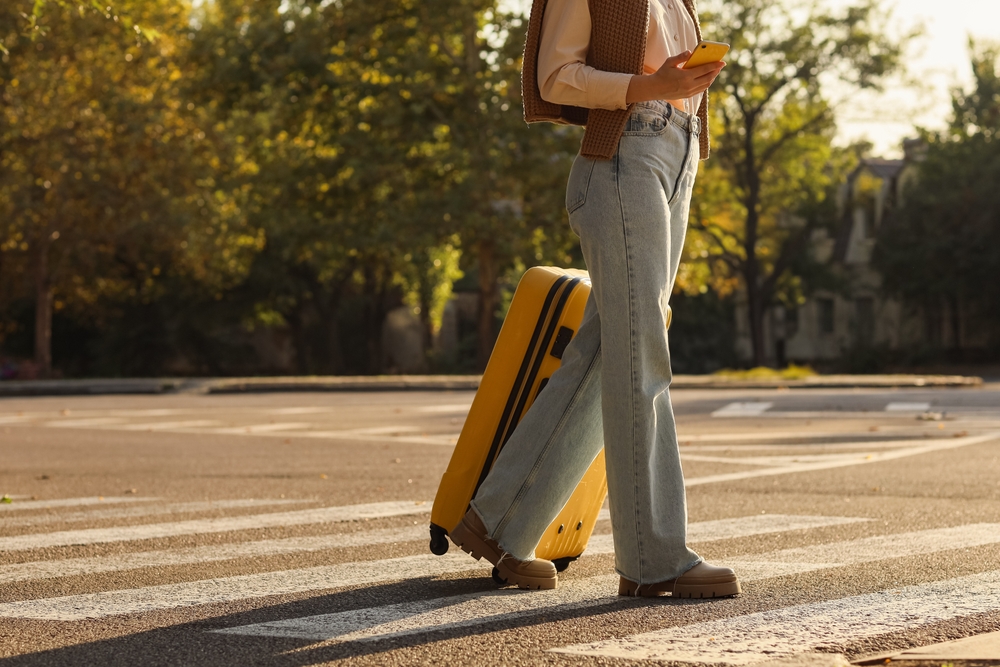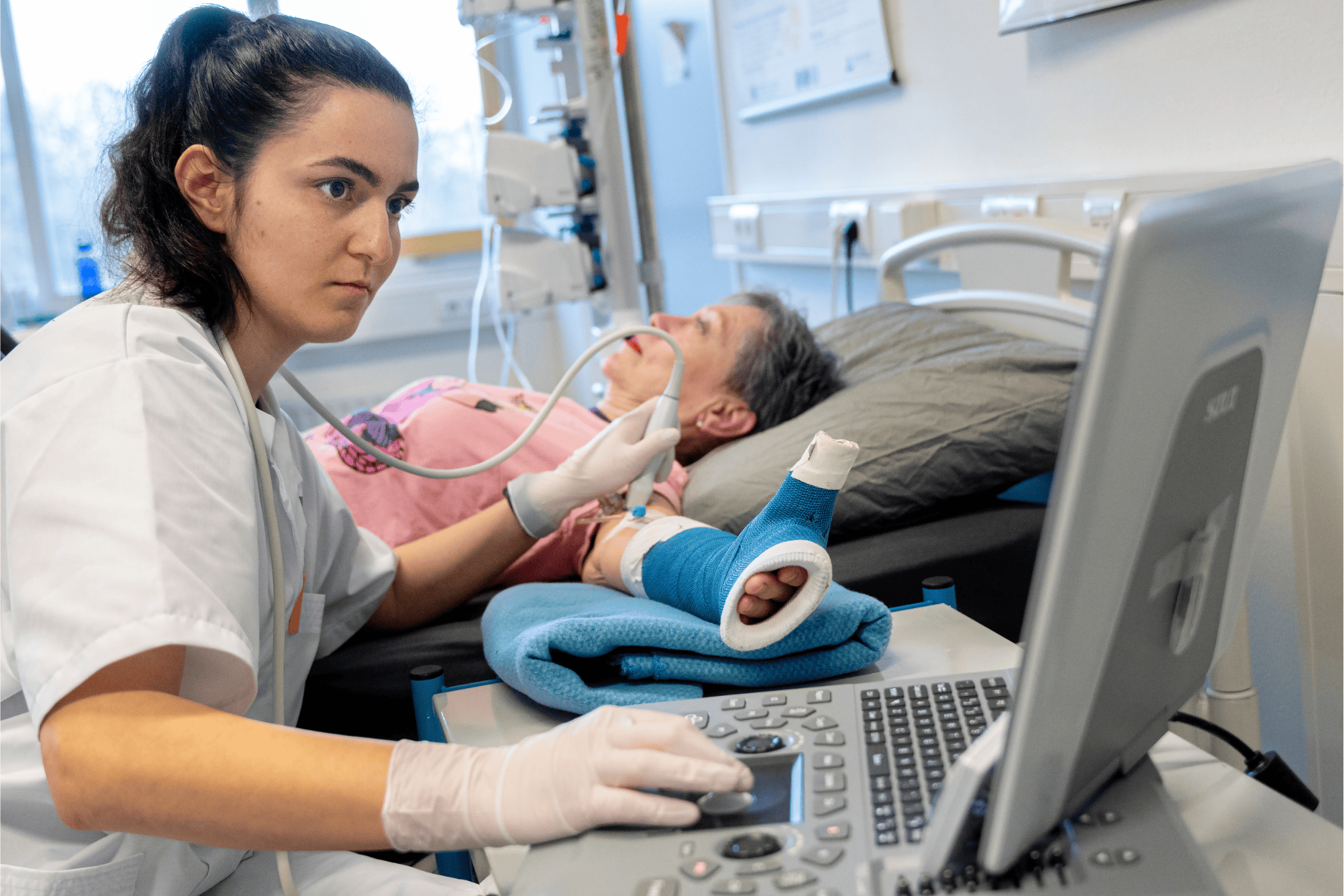Resource Debate
What could and should WUR do to make staff and student mobility even more sustainable? That question is the focus of a debate on mobility that Resource is organizing in Impulse on Thursday 22 May. The event will be from 12:30 to 13:30. It will include thought-provoking statements on paying for parking on campus, internships abroad, working from home and a cap on flights.
Panelists:
Sjoerd Brandsma, landschape-architect, researcher and teacher
Erna Maters, policy adviser sustainability
Hanne Elsinga, chair Student Council
Since the Covid pandemic, WUR employees have been flying on business much less than before. But we are also now less likely to cycle to work.
Covid has had a dramatic impact on the world of work. You could even say working from home has been the most tangible lasting effect of the pandemic. We all spend much less time on campus: only just over half our working hours on average. That is good for our ecological footprint, the latest mobility survey shows.
Sustainability policy officer Erna Maters has put together some figures from the monitor (from 2024, not yet published) for Resource. It clearly confirms what a game-changer Covid has been for mobility — and therefore sustainability. The most eye-catching result is that there are far fewer business flights across the board at WUR. In 2024, WUR employees flew a total distance of 31 million kilometres, the equivalent of 780 times round the world. The figure before the pandemic was twice that. It was barely possible to fly at all during the Covid pandemic, and that dampening effect has persisted in the years that followed.
After Covid, people started flying again, but not nearly to the same extent as before
Erna Maters, sustainability policy officer
The change in air travel is evident from other data too. Half of the employees say they fly less than in the past. At the same time, more people than in the past say they do fly on business at least occasionally. So more people are flying but much less often in total. WUR has had restrictions on flights within Europe since 2020. The WUR travel agency no longer offers plane tickets for destinations that can be reached by train within six hours. Permission from your manager is needed for journeys of between six and eight hours. However, Maters says this policy doesn’t explain the drop in flight hours. ‘WUR researchers have very international work fields and they don’t fly much within Europe. So this measure isn’t reflected in the emissions. After Covid, people started flying again but not nearly to the same extent as before. That is despite the big increase in the number of employees. So there genuinely seems to be something going on.’
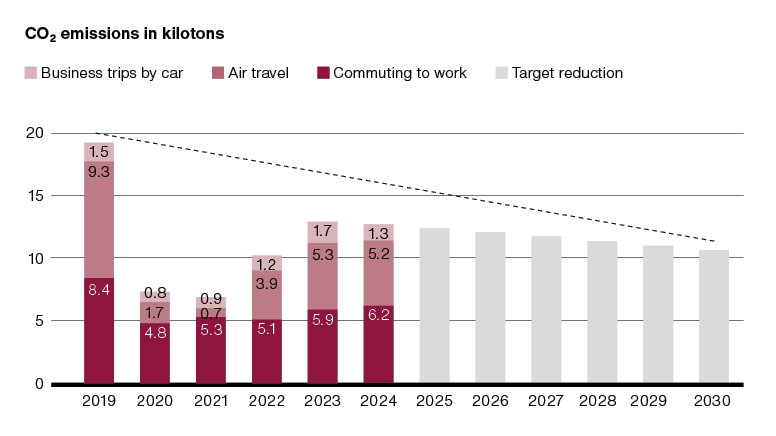
Cars
‘Flight shaming’ means that flying is no longer (quite) the biggest source of travel-related CO₂ emissions at WUR. That position is occupied by commuting to work by car. Commuter travel by car also fell during the pandemic, but not by nearly the same extent as business flights. Despite the increase in working from home, commuting by car is almost back up to pre-Covid levels. That is partly explained by the growth in WUR’s workforce. The number of employees has risen by almost 30 per cent since 2019.
But that’s not the whole picture. Staff are driving to work more than in the past. Ten years ago, more than half of staff were cycling to work. That was still the case just before Covid. Now, the figure is four in ten employees, and car use has increased accordingly. One explanation is that more employees live a long way from their work than in the past, says Maters. ‘Many employees live in Wageningen, Bennekom or Ede, and they mainly cycle to work. But the group that lives further away has grown bigger. That’s a nationwide trend: people live further from their place of work.’ In figures, before the pandemic 82 per cent of the people driving to work lived more than 15 kilometres from their work, and that percentage has increased to 86 per cent.
That’s a nationwide trend: people live further from their place of work
Erna Maters, sustainability policy officer
A link with the increase in working from home seems an obvious possibility given that working from home makes it easier to live further away. ‘That’s certainly one factor,’ agrees Maters. ‘It has become easier to work remotely since the pandemic. I hear that too from people who live a long way away.’ She also points to the effect of the housing market. ‘A specific factor in Wageningen is that it’s so difficult to find appropriate, affordable housing. That means you can’t move here, even if you wanted to.’
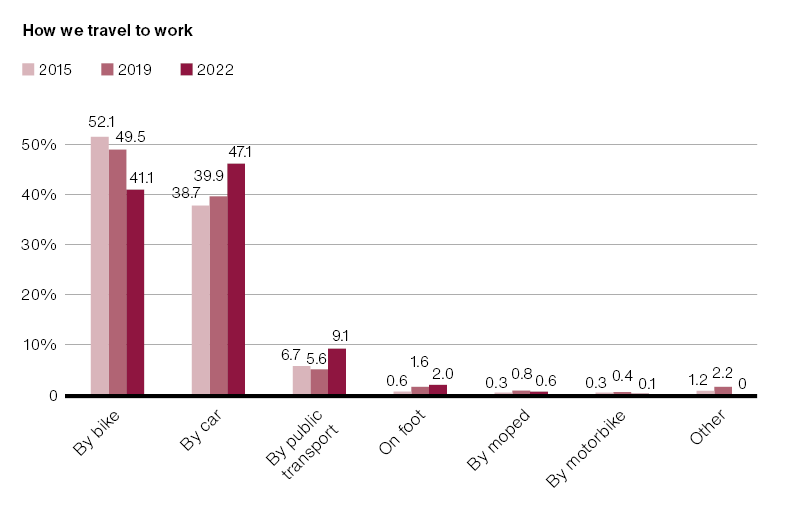
Public transport
In addition to commuting by car, there has also been an increase in the use of public transport. Less than 6 per cent used public transport before the pandemic, compared to 9 per cent now. That could be because it is now free. ‘Since 1 July 2022, public transport costs have been reimbursed in full to encourage the use of public transport,’ explains the head of HR, Martijn Scheen. ‘This is a sustainability measure. We are one of the few universities to do this.’ Drivers get an allowance of 14 cents per kilometre. ‘That’s a reasonable reimbursement,’ says Scheen, ‘and above the average for other universities. It is not too high, because that would be encouraging people to come by car. Not everyone can get to work by public transport anyway. Incidentally, distance isn’t the key determining factor in deciding whether or not to work somewhere.’
Distance isn’t the key determining factor in deciding whether or not to work somewhere
Martijn Scheen, head of HR
The developments described above have led to a substantial decline in overall mobility-related CO₂ emissions following the pandemic. Compared with 19 kilotons in 2019, CO₂ emissions last year were under 13 kilotons. The question is whether emissions could be reduced further still. For commuter travel, that basically boils down to stopping people coming by car. The answer seems to be: not really without any additional measures or policies. The mobility survey shows that 16 per cent of the people who come by car live less than 15 kilometres from their place of work. For that distance, they could use a bike or e-bike or they could car pool. But there is not much enthusiasm for that. That seems to be linked to the limited acceptance of any extra journey time. The journey for WUR employees who drive to work takes 40 minutes on average, and they would only be willing to accept an extra five minutes in journey time.
Students
Students mainly go to the campus by bike. Two thirds cycle, one fifth take the bus or train and 4 per cent walk there. Interestingly, 7 per cent of students drive to the campus. That might not seem a lot but given a student population of 14,000, that means nearly 1000 students take the car.
Business trips
Not all WUR employees travel for work by a long way. Half never go on business trips. Of those who do, 40 per cent sometimes take the plane. That is far more than before Covid, when 28 per cent flew sometimes for work. Half of the people who fly say they do so less than before the pandemic. Based on a workforce of 6000, that means about 600 employees are flying less than before.

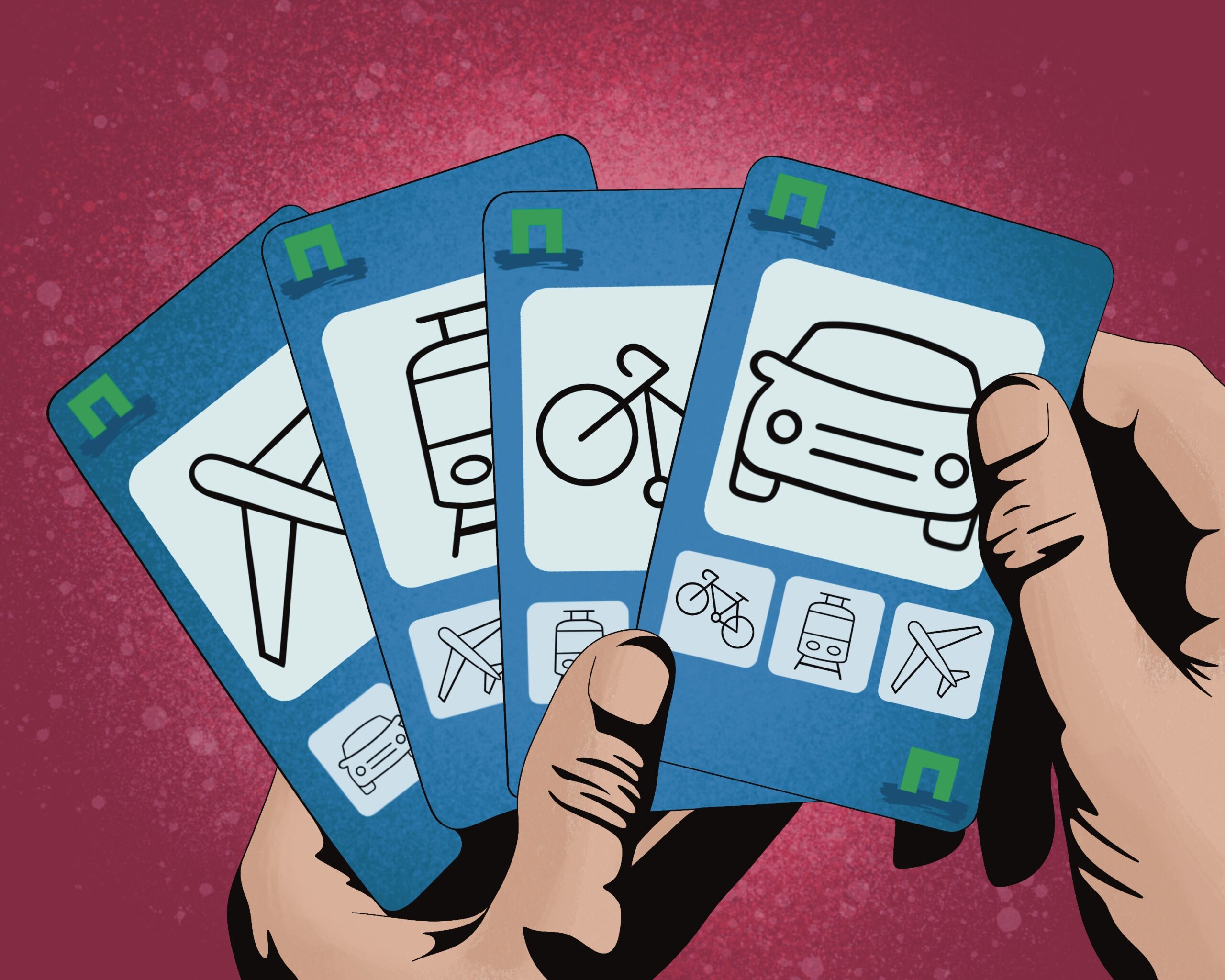 Illustration Valerie Geelen
Illustration Valerie Geelen 